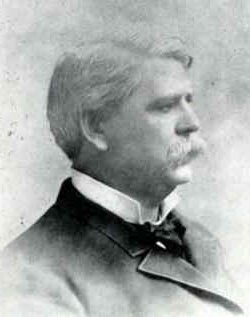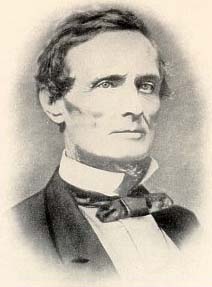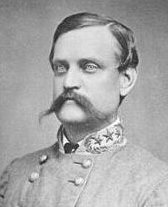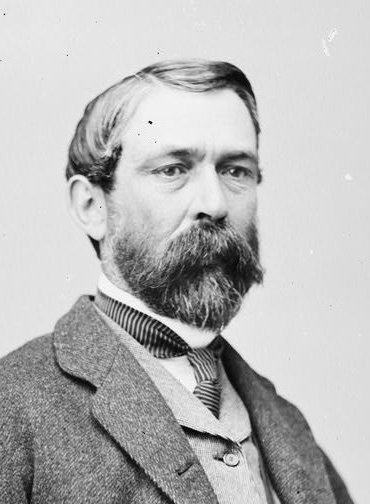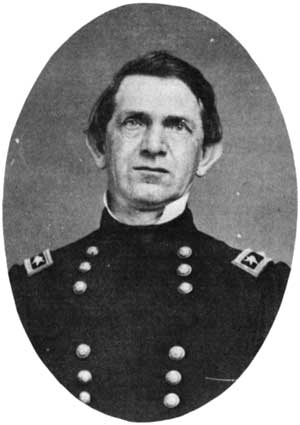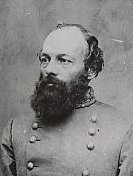The Carolinas Campaign
Johnston's Surrender
at Bennett Place on Hillsboro Road
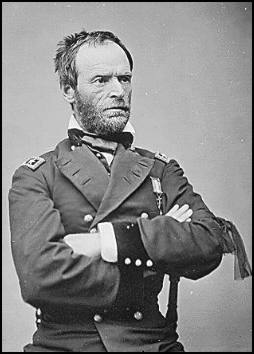
Sherman |
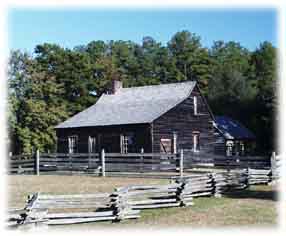
James Bennett's Farm |
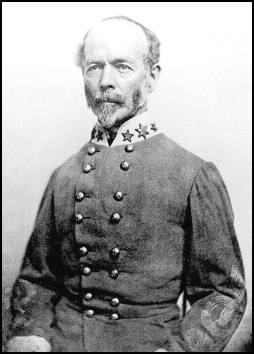
Johnston |
"COMRADES: . . . I earnestly exhort you to observe faithfully the terms of pacification agreed upon; and to discharge the obligations of good and peaceful citizens, as well as you have performed the duties of thorough soldiers in the field. By such a course, you will best secure the comfort of your families and kindred, and restore tranquillity to our country."
General Joseph E. Johnston
General Order No. 22
Introduction
The surrender of General Joseph E. Johnston's Confederate Army to General William T. Sherman at the Bennett Place, April 26, 1865, was the second and last major stage in the peace making process which ended the War Between the States. General Lee's surrender at Appomattox 17 days earlier was the first. The capitulation of General Richard A. Taylor's small force in Alabama a week later and of Kirby Smith's Trans-Mississippi Army at New Orleans exactly a month later concluded the process.
Johnston surrendered by far the largest share of the Confederate troops still in the field at war's end, more than Lee and the others combined. He surrendered all Confederate forces in the Carolinas, Georgia, and Florida and took those States out of the war.
Prelude
General William T. Sherman advanced into North Carolina in early March, 1865, and moved toward Goldsboro, where supplies and additional troops awaited him. His desire was to pass through the State as quickly as possible and unite with General Grant in Virginia. He knew, however, that Johnston would try to block his advance.
The attempt came at Bentonville, about 18 miles southwest of Goldsboro. Unable to stop the advance Johnston retreated to Smithfield and from there observed the enemy to determine which route would be taken for the eventual march north.
Meanwhile Sherman, unchecked but needing reinforcements, continued to Goldsboro where his army remained encamped until April 10. Sherman used this interlude to confer with Grant and President Lincoln in Virginia.
Realizing that Confederate resistance was near collapse, Sherman asked the President for his direction on terms of surrender and the treatment of Confederate troops. Sherman shared Lincoln's attitude of leniency for a defeated South and was convinced that Lincoln's peace would stress "malice toward none: with charity for all."
Fall of the Confederacy
When the news of Confederate defeats in Richmond and Petersburg reached Sherman on April 6, he immediately ordered his troops to be ready to march on the 10th. While in Smithfield en route to Raleigh, the news of Lee's surrender reached the army. Now Sherman could concentrate his complete attention on the retreating army of Confederates under Johnston.
With further destruction imminent, steps were initiated to spare North Carolina excessive devastation. Governor Zebulon B. Vance sent a peace delegation to Sherman offering to surrender the State upon his promise to help terminate hostilities and to recognize the State government. Events moved so rapidly that this proposal was bypassed in the confusion that followed.
Johnston also realized the ominous prospect and left the movement of his army to his subordinate, while he made his way to Greensboro. There he conferred with President Jefferson Davis and the cabinet for two days. Davis pressed for a renewed Confederate offensive until the confirming news was brought by Confederate Secretary of War John C. Breckenridge that Lee had surrendered. Davis was then persuaded to offer terms to the United States.
Meanwhile, Sherman had entered Raleigh on April 13 without encountering resistance. Governor Vance, believing the situation hopeless, had left the city early in the morning of the same day.
Sherman set up headquarters in Raleigh and made plans to move next on Asheboro and Salisbury or Charlotte. In the midst of his preparations, however, the letter came from Johnston asking for "a temporary suspension of active operations . . . the object being to permit the civil authorities to enter into the needful arrangement to terminate the existing war." Johnston proposed a meeting for April 17 and Sherman accepted.
First Meeting
A midway point was selected by aides of the two Generals. They chose a small farmhouse, the residence of James Bennett, located on the Hillsboro road west of the community of Durham.
Upon his arrival at Durham's Station, Sherman was greeted by Brigadier General Kilpatrick and a cavalry honor guard. As they traveled toward the Bennett Place, General Johnston with Lieutenant General Wade Hampton and a cavalry escort approached from the west.
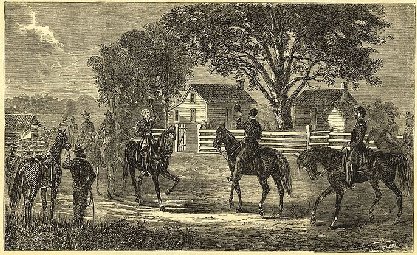
Johnston and Sherman meet on Hillsboro road |
|
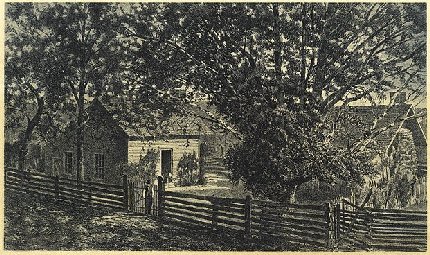
The Bennett Place |
Adversaries of long standing, Sherman and Johnston met on the Hillsboro road for the first time. Shaking hands while still mounted, they greeted each other in a courteous manner. Then, dismounting, they entered the house of James Bennett.
As soon as they were alone, Sherman showed Johnston a telegram he had received that morning. It was from Edwin M. Stanton, Secretary of War, announcing the assassination of President Lincoln. Unaware of the difficulties this tragedy would create for them before their negotiations were completed, the generals began their conferences.
Terms of surrender were not immediately agreed upon. Sherman was prepared to offer terms like those Grant gave Lee--military terms only, which dealt with the surrender of the vanquished to the victor.
Johnston wanted "to arrange the terms of a permanent peace." This would in his opinion include political as well as military terms. While Johnston recognized that military capitulation was necessary, he hoped to obtain political guarantees which would restore the rights and privileges of the people of the South. To put this plan into effect immediately, he offered to surrender all Confederate troops in the field.
Two considerations prompted Sherman to compromise. He saw the real possibility that Johnston might fail to surrender if acceptable terms were not offered. This turn of events could result in the southern armies being free to engage in foraging and raiding, with the outcome affecting no peace at all. Also, the general surrender of all remaining Confederate forces was appealing to Sherman. Therefore he agreed to consider an armistice based on political as well as military conditions.
Sherman returned to Raleigh to confer with his aides on the general terms, and on the question of amnesty for President Davis and his cabinet. Johnston returned to Lt. General Hampton's headquarters near Hillsboro to consult with his aides and establish his authority to surrender all the remaining Confederate armies.
The following morning when the generals met for the second time at the Bennett Place, Johnston asked that Confederate Secretary of War Breckenridge be admitted to the discussions in order to help work out the points concerning President Davis and his cabinet. After approximately half an hour of conversation on the subject, Johnston presented a plan which had been written earlier. Sherman listened, then sat down and wrote out the terms agreed upon at that time.

Johnston and Sherman inside the Bennett Place |
|
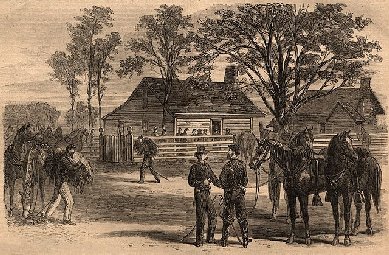
Cavalry escorts wait outside |
The terms provided for an armistice terminable at forty-eight hours' notice. The scattered Confederate armies throughout the South were to deposit their arms in the various State arsenals and be disbanded. The State governments were to be recognized by the United States upon the taking of the prescribed oaths of allegiance. Federal courts were to be established. The people were to be restored to their political rights and franchises as well as their rights of person and property. A promise of general amnesty was also included.
In conceding the point of general amnesty, Sherman gave Breckenridge, who had been traveling with Davis' party, the hint that President Davis and his cabinet should make their escape before their amnesty could be challenged in Washington.
Final Arrangements
Jefferson Davis approved these terms but in Washington the news was received as a bombshell and Secretary of War Edwin M. Stanton stood ready to ignite it. In the cabinet the terms were rejected and orders issued to resume hostilities immediately. General Grant was dispatched to Raleigh to take charge and he arrived on April 24 without advance notice to Sherman. Instead of superseding Sherman, however, Grant only instructed him to negotiate anew on the basis of terms similar to those given Lee at Appomattox.
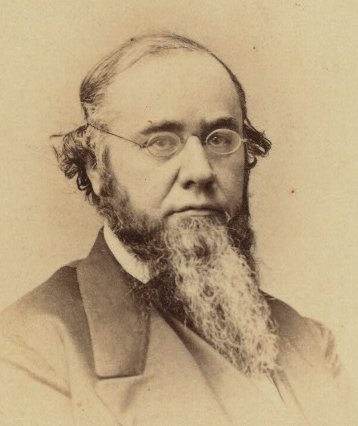
Stanton |
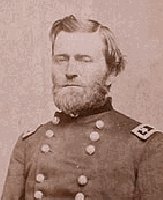
Grant |
Jefferson Davis opposed the new demand for stringent terms and ordered Johnston to disband the infantry and make a getaway with the mounted troops as quickly as possible. But Johnston, understanding the futility of the situation and the resulting tragedy of a prolonged war, disobeyed orders and met Sherman again at the Bennett House on April 26.
The final agreement was simply a military surrender. None of the civil guarantees of the first agreement were included. All acts of war were to cease. Arms and public property were to be turned over to the United States. Side arms, private horses, and baggage were to be retained by officers. All officers and men were required to promise individually in writing not to take up arms again.
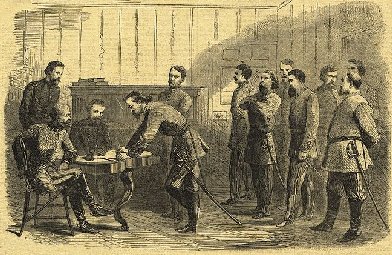 |
|
While the terms were drawn up at the Bennett Place, the mustering out of the troops and issuance of paroles for those who surrendered in North Carolina took place at Greensboro.
These proceedings at Greensboro became confused, and General Johnston worked out a set of supplementary terms with Union General John M. Schofield, in charge of operations in North Carolina, to eliminate this confusion and to facilitate the return of the Confederate officers and men to their homes. |
The surrender at the Bennett Place brought the long-fought war virtually to an end. With the surrender of the small forces of General Richard A. Taylor at Citronelle, Alabama, on May 4 and of General E. Kirby Smith at New Orleans on May 26, both to General E. R. S. Canby, organized resistance was brought to a complete end.
HOME
What's New -
About SCV -
Join SCV -
News Letter -
Photo Quiz -
Chaplain -
Education
Battle Site -
Ancestors -
Memorials -
Links -
Photo Gallery -
Guest Book -
Site Index



